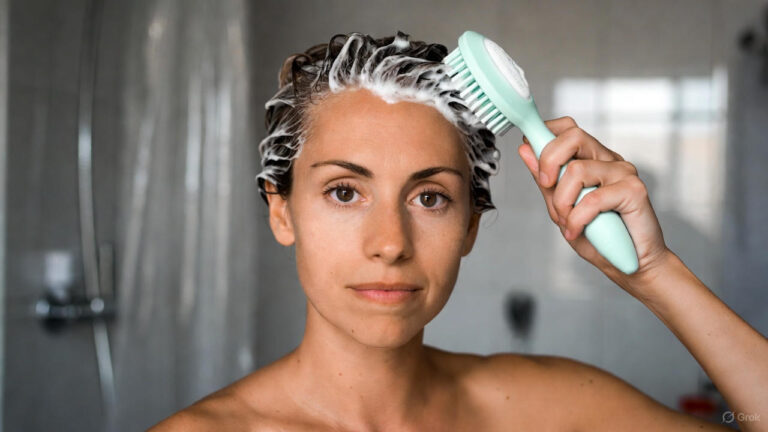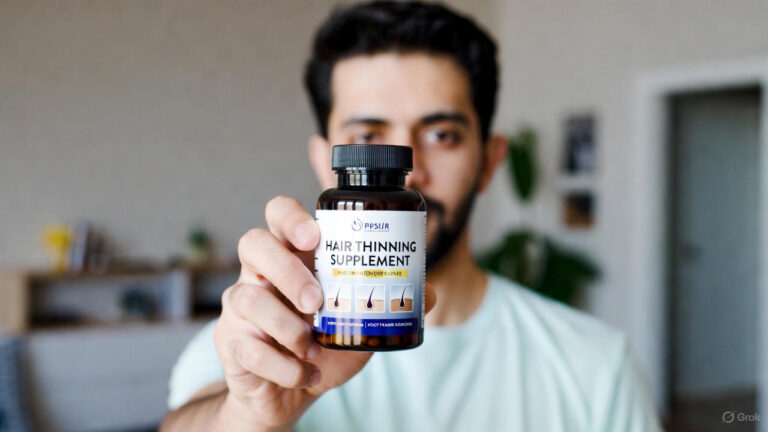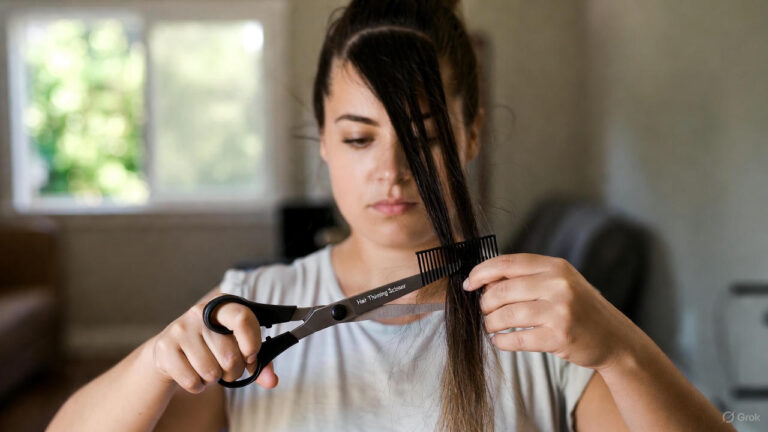Who doesn’t love the effortless, tousled look of beachy waves? They add a touch of carefree elegance to any hairstyle, making them a popular choice among women of all ages. While achieving those perfect waves may seem daunting, fear not!
In this ultimate guide, we will show you how to get beachy waves using a flat iron. With a few simple techniques and the right tools, you can easily recreate that coveted beachy vibe in the comfort of your own home.
Understanding Beachy Waves
Beachy waves are characterized by loose, natural-looking curls resembling the ocean’s waves. They provide a relaxed and chic aesthetic, making them suitable for casual outings, date nights, or formal events.
Their versatility is one of the key reasons why beachy waves have gained immense popularity. Whether you have short, long, straight, or curly hair, you can confidently rock this hairstyle.
Preparing Your Hair
Before diving into the world of beachy waves, it’s crucial to start with a clean canvas. Begin by washing your hair and allowing it to dry thoroughly. This will ensure that your waves are set properly and last longer.
Additionally, it’s essential to protect your hair from the heat of the flat iron. Apply a heat protectant spray generously from roots to ends to shield your strands from damage caused by high temperatures.
Lastly, gently detangle your hair using a wide-tooth comb or a brush designed for wet hair.
Choosing the Right Flat Iron
Investing in a good quality flat iron is essential for achieving beautiful beachy waves. Look for a flat iron with ceramic or tourmaline plates, as they distribute heat evenly, reducing the risk of hot spots and minimizing damage to your hair.
Titanium flat irons are also a great option, as they heat up quickly and provide smooth gliding through the hair. Ensure that the flat iron has adjustable heat settings so you can customize the temperature based on your hair type. This versatility allows you to find the perfect balance between heat styling and hair protection.
Heat Settings and Temperature Control
Finding the right temperature for your hair type is crucial to prevent heat damage. Generally, a temperature range of 300°F to 350°F (150°C to 180°C) is suitable for most hair types.
However, if you have fine or damaged hair, it’s best to keep the heat lower, around 250°F to 300°F (120°C to 150°C). On the other hand, if you have thick or coarse hair, you may need to increase the temperature to 350°F to 400°F (180°C to 200°C).
It’s important to remember that lower heat settings are always a safer option to protect your hair.
Step-by-Step Guide to Creating Beachy Waves with a Flat Iron
Now that you’re armed with the necessary knowledge let’s dive into the step-by-step process of creating beachy waves using a flat iron.
1. Sectioning Your Hair
To ensure an organized and manageable styling process, divide your hair into sections. Start by parting your hair horizontally from ear to ear, creating an upper and lower section. Secure the upper section with a clip or hair tie.
2. Preparing Each Section
Before styling each section, comb or brush it to remove any tangles. This step ensures that the waves are smooth and even. Additionally, apply a heat protectant spray to the sectioned hair to safeguard it from the heat of the flat iron.
3. Creating Waves
Take a small section of hair from the lower section and clamp the flat iron near the roots. Twist the flat iron away from your face and glide it down the length of the hair, maintaining a gentle tension. Release the hair from the flat iron, and allow the wave to cool for a few seconds before moving on to the next section.
For a more natural look, alternate the direction of the waves by twisting the flat iron towards your face for some sections and away from your face for others. This variation adds dimension and texture to your beachy waves.
4. Repeating the Process
Continue working through the remaining sections of your hair, following the same clamping technique, twisting, and gliding the flat iron. Remember to work with smaller sections for more defined waves and larger sections for looser waves.
If you have longer hair, you may find it easier to further divide each section into subsections for better control and more uniform waves.
5. Finishing Touches
Once you have created waves throughout your hair, it’s time to add those final touches. Lightly spritz your hair with a sea salt spray to enhance the texture and mimic the natural tousled look of beachy waves.
You can also use a texturizing or volumizing spray to add more definition and body. To soften the waves and achieve a more effortless appearance, gently run your fingers through the waves, separating them slightly. This technique creates that effortless, windswept effect we all love.
Styling Tips and Variations
Beachy waves offer endless possibilities for styling and customization. Here are a few tips and variations to explore:
1. Half-Up Hairstyles
Create a trendy half-up hairstyle by gathering the top section of your hair and securing it with a hair tie or clip. Leave the rest of the waves flowing down for a playful and romantic look.
2. Updo Hairstyles
Transform your beachy waves into an elegant updo by gathering your hair into a loose bun or a messy top knot. Leave a few face-framing waves to soften the look and add a touch of whimsy.
3. Braided Accents
Incorporate braids into your beachy waves for a boho-chic vibe. Create a small braid on one side of your head and secure it with a bobby pin, intertwining it with the waves. This adds a charming detail to your overall hairstyle.
4. Customizing the Waves
Feel free to experiment with different widths and angles of waves to find the style that suits you best. For tighter waves, take smaller sections and twist the flat iron more tightly.
For looser waves, use larger sections and twist the flat iron less. Customize the waves to match your personal preference and desired level of sophistication.
Maintaining Beachy Waves
To make your beachy waves last longer, it’s important to take proper care and use the right products. Here are some tips for maintaining your waves:
1. Using Hairspray
Spritz your hair with a lightweight hairspray to hold the waves in place. Opt for a flexible-hold hairspray to avoid stiffness and maintain the natural movement of the waves.
2. Dry Shampoo
Refresh your waves and absorb excess oil by using a dry shampoo between washes. This helps extend the life of your beachy waves and adds volume to the roots.
3. Overnight Care
To preserve your beachy waves overnight, loosely braid your hair or twist it into a bun before going to bed. In the morning, undo the braids or bun and gently tousle your waves with your fingers to revive them.
4. Touch-Ups
Throughout the day, if you notice any waves starting to lose their shape, you can touch them up using the flat iron. Take small sections of hair and reapply the clamping, twisting, and gliding technique to redefine the waves.
Protecting Your Hair from Heat Damage
While using heat styling tools, it’s important to protect your hair from damage and maintain its overall health. Here are some tips for protecting your hair from heat damage:
1. Regular Deep Conditioning Treatments
Incorporate deep conditioning treatments into your hair care routine to nourish and hydrate your strands. Look for products specifically targeting heat-damaged hair and use them regularly to restore moisture and prevent breakage.
2. Minimizing Heat Exposure
While beachy waves are achieved using a flat iron, it’s important to minimize heat exposure whenever possible. Embrace air-drying your hair or opt for heatless styling techniques on non-essential days to give your hair a break from heat styling.
3. Using Heat Protectant Products:
Invest in a high-quality heat protectant spray or hair serum and apply it to your hair before using any heat-styling tools. This creates a barrier between your hair and the heat, reducing damage risk and protecting your strands.
4. Avoiding Excessive Heat
Remember that higher heat settings are not always better. Use the lowest temperature possible to achieve your desired waves. Start with a lower heat setting and gradually increase it if needed. This will help prevent unnecessary damage to your hair.
5. Limiting Frequency
Try to limit the frequency of heat styling to avoid overexposure. Opt for alternate hairstyles that don’t require heat, such as braids or updos, on days when you want to give your hair a break.
Conclusion
Creating beachy waves using a flat iron is an achievable and versatile hairstyling technique. With the right tools, techniques, and a little practice, you can effortlessly achieve that carefree, tousled look.
Frequently Asked Questions
1. Can I achieve beachy waves with naturally straight hair?
Yes, you can! While it may require some extra effort and heat styling, you can achieve beachy waves with naturally straight hair. Use a texturizing spray or mousse before styling to add grip and create waves that last longer.
2. How long will beachy waves typically last?
The longevity of beachy waves can vary depending on various factors such as hair texture, products used, and activities you engage in. On average, beachy waves created with a flat iron can last anywhere from one to three days.
However, with the right hair care routine and proper maintenance, you can extend the lifespan of your waves. Using a good hairspray and avoiding excessive touching or brushing can help preserve the waves for longer periods.
3. Can I create beachy waves with a curling iron instead of a flat iron?
Yes, you can achieve beachy waves with a curling iron as well. The technique will be slightly different, but the results can be equally stunning. Wrap small sections of hair around the curling iron barrel, leaving the ends out for a more undone look. After releasing the hair, gently tousle and separate the waves with your fingers.
4. Is it necessary to use a heat protectant spray before using a flat iron?
Yes, using a heat protectant spray is highly recommended before using any heat-styling tools, including a flat iron. The heat protectant spray creates a barrier between your hair and the heat, reducing the risk of damage and keeping your strands protected.
5. Can I achieve beachy waves on colored or chemically treated hair?
Yes, you can still achieve beachy waves on colored or chemically treated hair. However, it’s important to ensure that your hair is in good condition and properly cared for. Deep conditioning treatments and using heat-protectant products are even more crucial to maintain the health and integrity of your hair.



